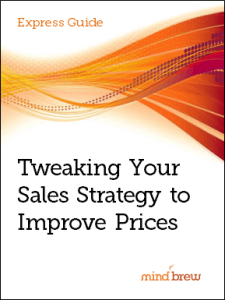As I write this, there’s a hurricane headed for the East coast…
They say it might make landfall in the next five or six days. But they also say that it could change course by then. Because the water is warm this time of year, they say it could spin into a Cat 4, or even a Cat 5. But it could also weaken back down to “tropical storm” levels. At this point, there are a lot of unknowns.
But if you live in the projected path, are you really going to wait for all the specifics to be nailed down with 100% certainty to do something?
As I write this, trade tariffs are also looming large…
Some have already been imposed. More are in the works. Some are relatively small. Others are positively huge. Certain goods and countries are being exempted, while other goods and countries are getting a double shot. The situation could last for years, or it could all end with the stroke of a pen. On and on, there’s a lot of uncertainty and the specifics are few and far between.
But just like with a hurricane, you don’t have to wait for 100% clarity…because you already know everything you need to know to make a solid plan.
In a recent Expert Interview, I spoke with Sean Arnold on the topic of tariffs. Sean is a principal consultant at INSIGHT2PROFIT, where he’s currently helping a number of companies work through this specific challenge. And Sean is very clear about the need to develop a plan that’s somewhat independent of the specifics:
In this national discussion about tariffs, facts and opinions have intermingled. There isn’t clarity around what’s actually going to be policy versus what are just some of the ideas and options being discussed. When there’s this level of uncertainty, we’re counseling our clients to build a plan where the guiding principles and broad contours of how we want to react are debated and well established. And you can figure those things out without knowing all of the exact details.
Throughout the rest of our hour-long discussion, Sean walked us through a whole range of questions that can and should be answered in advance of the specific tariff policies being enacted, whatever they may be:
- Are you going to roll the tariff into the price itself? Or is it going to be presented as a separate surcharge or line item?
- Should you be striving to remain whole with respect to the margin percentages or the margin dollars?
- Are individual account teams going to have some level of discretion in how they cover the costs? What are their options?
- Are you going to expect your suppliers to absorb a certain portion of the burden, while your customers absorb the rest?
- Are you going to take additional profit under the “cover” of tariff increases? If so, when, where, and how much will you seek?
- How are you going to communicate these things to customers? How will you explain the things that differ from their expectations?
- Are there revenue-based volume rebates or commission structures that could be artificially affected? How will you deal with them?
As you can see, these are pretty significant decisions and considerations. These things can all be hammered out prior to knowing every detail of the tariff policies that are ultimately enacted. And once the specifics are known, you can just plug those details into your plan and execute.
The point is that uncertainty is no excuse. After all, you know the storm is coming. You may not know how big it’s going to be, or exactly when and where it’s going to hit…but you do know that it’s coming.
And without knowing anything else, you can develop an effective plan for dealing with it.
















